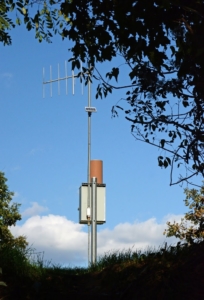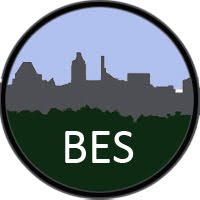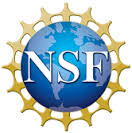Program description
The Baltimore Ecosystem Study (BES) began in 1998 with three questions to advance the understanding of urban areas as a novel and increasingly important ecosystem type:
- Structure: What is the spatial and temporal patch structure of ecological, physical, and socio-economic factors in the urban ecosystem?
- Function: What are the fluxes of energy, matter, and populations in patches of the urban ecosystem?
- People: What are the choices people and their organizations make that affect the urban ecosystem?
Since its inception, BES has focused on three focal process areas: watershed biogeochemistry, ecological communities and sentinel species, and human environmental perceptions and behaviors. The project has pioneered new theory and methods for characterizing urban ecosystems, established long-term (perhaps the longest in the world) urban watershed hydrology and biogeochemistry datasets, developed and applied novel long-term urban social survey instruments and characterized long-term changes in multiple dimensions (plants, birds, soil fauna) of urban biodiversity. BES educators and scientists work directly with students and schools in Baltimore to help bring science into the classroom and with government agencies, non-governmental organizations, communities and neighborhoods to use results from BES research to improve environmental quality and human health and well-being across the City.
Key Site-based findings and products 2008-2018 (Parenthetical citations listed at end of post.)
- BES has developed new theory (2) and methods (5) for characterizing the multidimensional, multidisciplinary nature of urban ecosystems. These efforts have facilitated analyses of urban ecosystems across the globe and the development of a new “urban systems science” that is a key component of emerging sustainability science across the globe (7).
- BES watershed research has shown that nutrient cycling and retention in urban watersheds are driven by complex dynamics, with surprisingly high nitrogen retention, climate sensitivity and surface water:groundwater interactions (1, 8). These studies have been a platform for novel analyses of the ecosystem effects of emerging contaminants (10).
- BES has helped challenge the assumption that urban biodiversity is low, replacing it with a realization that biological communities in urban environments are diverse and dynamic, with significant effects on fluxes of water, energy, carbon and nutrients and human well-being (6, 9, 4).
- The BES Household Telephone Survey has provided novel information on environmental knowledge, perceptions, values, and behaviors; how these influence ecosystem structure and function; and how changes in ecosystem structure and function may affect people’s physical activity, social cohesion, perception of neighborhood desirability, and willingness to relocate (3).
Selected cross-site or broader syntheses (2008-2018)
Our sibling urban LTER program in Phoenix (CAP) and BES have a long history of collaboration. Coordinated data collection (telephone survey, plant diversity, soil processes, microclimate, hydrography, plant and soil C and isotopes) was (and is continuing) done as part of two projects funded by the NSF Macrosystems Biology program on “urban homogenization.” This work emerged directly from our cross-site collaborations and discussions, has produced a series of direct comparisons between Baltimore and Phoenix as well as comparisons with four other cities including Boston, Miami, Minneapolis-St. Paul and Los Angeles (6). More generally, BES and CAP both employ “200 point surveys” for collection of data across the urban ecosystem and these platforms facilitate comparisons between our two LTER sites.
Broader impacts, education, and outreach (2008-2018)
Since 2009, we have worked with 135 teachers in Baltimore in a variety of education programs including the Pathways to Environmental Science Literacy project in partnership with LTER sites in California, Colorado, and Michigan. Outcomes included 1) reaching thousands of students in the Baltimore City (ca. 80% African American, 10% Latino/a, and 9% white) and Baltimore County Public Schools (ca. 7% Asian, 39% African American, 10% Hispanic, 39% White, and 5% Two or More Races 5%), 2) research about teaching and student learning, and 3) curricular modules on carbon, water, biodiversity, and citizenship.
 |
| Downtown Baltimore from the Washington Monument |
Data stewardship and sharing
BES watershed data are the focus of outreach work with local municipalities grappling with water quality regulations (Total Maximum Daily Load) for the Chesapeake Bay through the Baltimore Urban Waters Partnership and our data and physical sample archive have attracted new investigators to pursue new analyses. Our core long-term data sets on trace gases (8), telephone survey and biodiversity have facilitated development of cross-site analysis (8) and the emergence of research on urban homogenization (6).
Investigators
From 2008 to 2018, BES engaged numerous participants. During this decade there were 92 investigators, 162 graduate students, 199 undergraduate students, 15 postdoctoral researchers, 6 education staff members, and 413 interested parties.
Partnerships and shared funding
The USDA Forest Service’s Baltimore Urban Field Station is fundamental to BES. Related research, education and outreach projects, and analysis of BES data are greatly facilitated by the Forest Service collaboration. The Baltimore Field Station is located on the campus of the University of Maryland, Baltimore County (UMBC) and includes 7 full time equivalents (FTEs), 9 offices for permanent staff and 4 “as-needed” spaces, two conference rooms, one field supply storage area and two field vehicles (van and pickup truck). The Forest Service works regionally and nationally, with other scientists and staff located at other locations who also work in Baltimore on BES related projects. The USDA Forest Service estimates a contribution of ~$1.1 / year to BES.
 |
| Data uplink from the Carroll Park BES/USGS stream gauge. |
Top ten products of the past decade
1. Bettez et al. 2015. Climate variation overwhelms efforts to reduce nitrogen delivery to coastal waters. Ecosystems 18:1319-1331. DOI: 10.1007/s10021-015-9902-9
2. Grove et al. 2015. The Baltimore School of Urban Ecology: Space, Scale, and Time for the Study of Cities. Yale University Press, New Haven.
3. Hager et al. 2013. Socio-ecological revitalization of an urban watershed. Frontiers in Ecology and the Environment 11:28-36. DOI: 10.1890/120069
4. Swan et al. 2017. Differential organization of taxonomic and functional diversity in an urban woody plant metacommunity. Applied Vegetation Science 20:7-17 DOI: 10.1111/avsc.12266
5. Pickett, S. T. A., M. L. Cadenasso, E. J. Rosi-Marshall, K. T. Belt, P. M. Groffman, J. M. Grove, E. G. Irwin, S. S. Kaushal, S. L. LaDeau, C. H. Nilon, C. M. Swan, and P. S. Warren. 2017. Dynamic heterogeneity: a framework to promote ecological integration and hypothesis generation in urban systems. Urban Ecosystems 20:1-14. DOI: 10.1007/s11252-016-0574-9
6. Groffman, P. M., M. Avolio, J. Cavender-Bares, N. D. Bettez, J. M. Grove, S. Hall, S. E. Hobbie, K. L. Larson, S. B. Lerman, D. H. Locke, J. B. Heffernan, J. L. Morse, C. Neill, K. C. Nelson, J. O’Neil-Dunne, D. E. Pataki, C. Polsky, R. V. Pouyat, R. Roy Chowdhury, M. Steele, and T. L. E. Trammel. 2017a. Ecological homogenization of residential macrosystems. Nature Ecology and Evolution 2017:article 0191. DOI: 10.1038/s41559-017-0191
7. Groffman, P. M., M. L. Cadenasso, J. Cavender-Bares, D. L. Childers, N. B. Grimm, J. M. Grove, S. E. Hobbie, L. R. Hutyra, D. G. Jenerette, T. McPhearson, D. E. Pataki, S. T. A. Pickett, R. V. Pouyat, E. J. Rosi-Marshall, and B. L. Ruddell. 2017b. Moving towards a new Urban Systems Science. Ecosystems 20:38-43. DOI:10.1007/s10021-016-0053-4
8. Ni, X., and P. M. Groffman. 2018. Declines in methane uptake in forest soils. Proceedings of the National Academy of Sciences https://www.pnas.org/content/115/34/8587
9. Schmidt, D. J., R. Pouyat, K. Szlavecz, H. Setälä, D. J. Kotze, I. Yesilonis, S. Cilliers, E. Hornung, M. Dombos, and S. A. Yarwood. 2017. Urbanization erodes ectomycorrhizal fungal diversity and may cause microbial communities to converge. Nature Ecology & Evolution 1:0123. DOI: 10.1038/s41559-017-0123
10. Rosi-Marshall, E., and T. Royer. 2012. Pharmaceutical compounds and ecosystem function: An emerging research challenge for aquatic ecologists. Ecosystems 15:867-880. DOI:10.1007/s1–21-021-9553-z
Administrative Details:
Lead Principal Investigator: Dr. Emma J. Rosi Institution: Cary Institute of Ecosystem Studies
Established 1998, LTER 1637661 (3.75 funding cycles)
Sponsoring NSF Directorate / Division / NSF Program(s): BIO/DEB/Ecosystems
Emma J. Rosi, Director
Peter M. Groffman, Deputy Director







